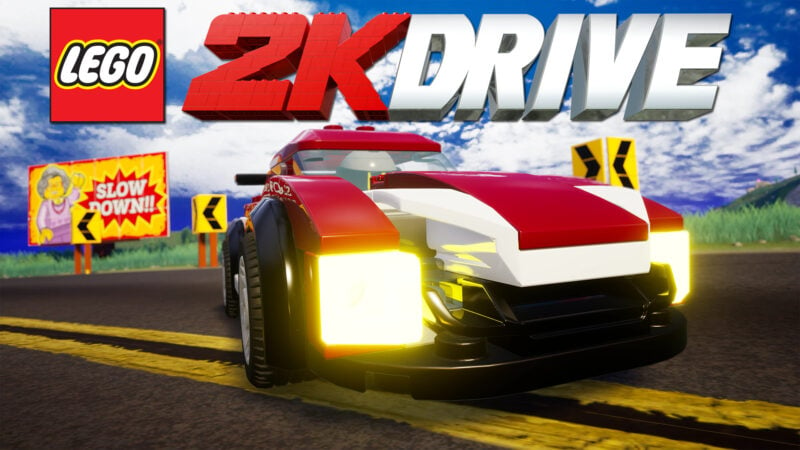
Danish building block-based racing game LEGO 2K Drive is heading to consoles and PC this week, launching on May 19. As an all-new title from a developer — Visual Concepts — and publisher not normally known for racing titles we were more than a little curious how the title would play.
Handily, Visual Concepts was happy to give GTPlanet an exclusive interview regarding the game — particularly its surprisingly deep driving mechanics and stats system — which we’re publishing today ahead of getting a hands-on with the title ourselves.
Joining us on the interview were creative director Brian Silva, general manager Steve Ranck, and senior engineer Ryan Kehlenbeck, who were all eager to discuss the title.
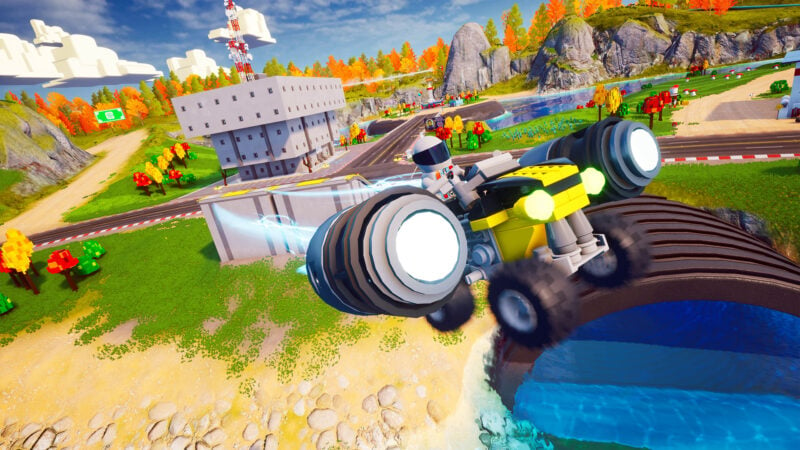
LEGO 2K Drive essentially came about from Ranck and Silva suggesting a racing game to LEGO. The duo had worked on driving games back in the 1990s — starting with Midway’s Hydro Thunder for arcade and later Dreamcast — and pitched this to LEGO. “They loved the idea!” added Ranck.
That led to an exploration of what a LEGO driving game should be. The team’s main goal is to make the environment look like LEGO but feel real, like it did when you were a child playing with the sets: “Playing with LEGO vehicle, it feels real to you; you fill in the gap from toy to fantasy,” says Ranck.
With the game involving a wild mixture of vehicles, some real and some wildly surreal, along with whatever the player can build themselves, the team needed to come up with a way to make the cars drive and handle like they were LEGO come to life — on land, and in the water.
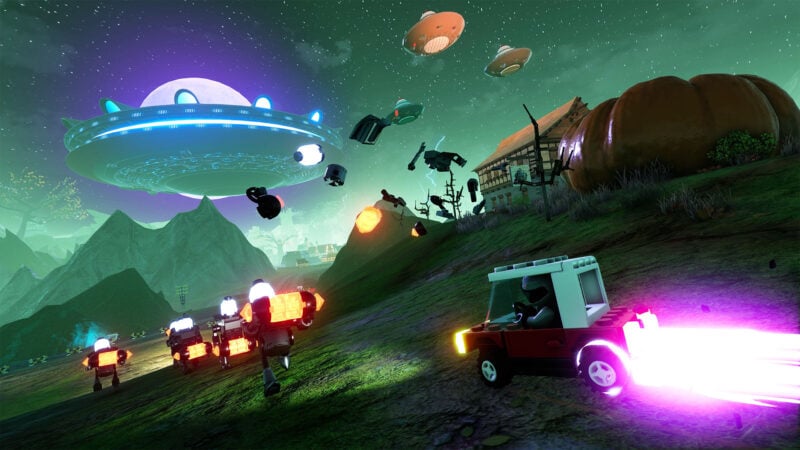
Kehlenbeck explains: “We tried to strike a nice balance between more arcade dynamics and simulation dynamics — probably leaning a little bit more on the arcade side to keep it accessible and keep things, you know, just fun. It plays well with the Lego theme and all the power ups in the world.”
“We do have some more in depth mechanics, like our different types of terrain. We’ve got street, off road, and water for boats; we put a lot of time and effort into off road car suspension — the way it would feel if you take a street car off road, how it would slide around, and boat buoyancy — and all these different things to give it a real world sort of feel and make things feel right based on how they look.”
What particularly interested us though was that the physics system not only takes account of how your vehicle is constructed, but continually analyzes it as you’re driving and take damage.
“Maybe you have a vehicle that’s super tall, there’s a lot of bricks up there; driving it, the turns feel like it has momentum to it,” explains Ranck. “But as you take damage, those bricks will start to fall off and suddenly your vehicle doesn’t feel like it’s super tall anymore.”
“It doesn’t feel like it has a ton of bricks. It feels more, more nimble. But then as you repair your vehicle,” — by smashing into the myriad destructible items (though not quite everything is smashable) — “those bricks get back on your car, and you start to revert back to the original feel of the vehicle.”
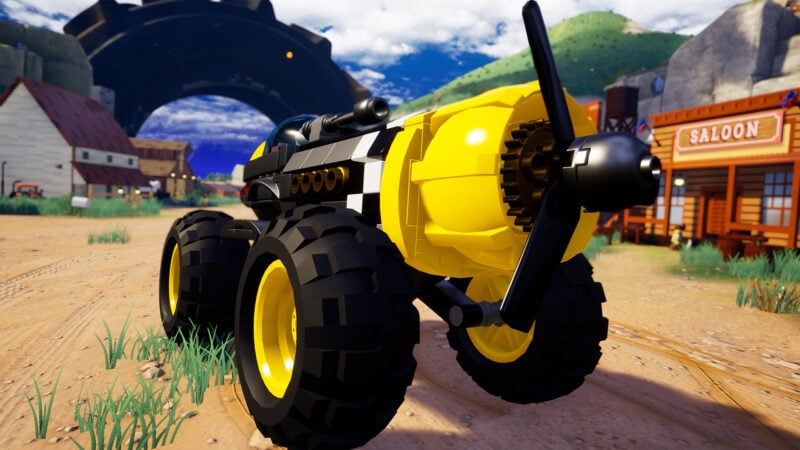
It’s still a highly accessible game, so the physics model isn’t necessarily deep enough to tell different engine placements — these cars don’t actually have engines (some might not have people in them) — but it’s enough that if you build something sufficiently weird it really will feel weird to drive.
That applies across terrain types too. There is a default “transformation” which sees you switch between road, offroad, and water, but players can switch to a manual mode too. Kehlenbeck notes that has some advantages, with players able to delay transforming — “maybe they do want to stay as a boat for an extra second because boats go really fast and they want to retain that momentum” — but it’s also possible to not transform at all.
Silva comments: “If you construct a type of vehicle that you feel is, qualified or capable of traveling from off road to street, by all means, you certainly can do that. And you can switch anytime you want in between as well — in fact, we, we allow the player to travel in the water in wheeled vehicles. It’s not very fast!”
“I wish we would have created a race, in fact, that you had to race in the water in a wheeled vehicle. That would have been really fun… and frustrating and crazy.”
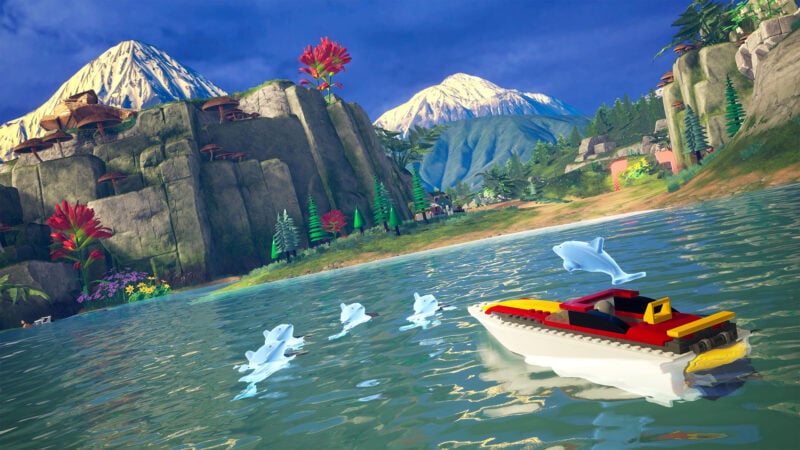
One of the key components to the game is the stats system, with Speed, Acceleration, Handling, Health, and Melee stats — largely coming from the player’s own rank, but with each vehicle having its own contribution — as well as a Weight stat which essentially comes from how heavy the vehicle is.
How heavy can it get? “We do have physical limits on the size,” says Ranck, “obviously because, you know, you have to be able to play the game. But the limits are pretty, pretty large.”
But bigger isn’t necessarily better. “The scale of your vehicle is a benefit one way or the other,” adds Ranck. “You need to determine depending on what activity you’re playing in the game. Sometimes you want a larger vehicle. Sometimes you want a smaller, more nimble vehicle.
“For exploration, you maybe want to be smaller and be able to go places. We have this one little mini game where you have to knock golf balls into a hole and if you have a tiny vehicle, it’s sometimes tough to do that. Brian actually made a golf putter vehicle!”
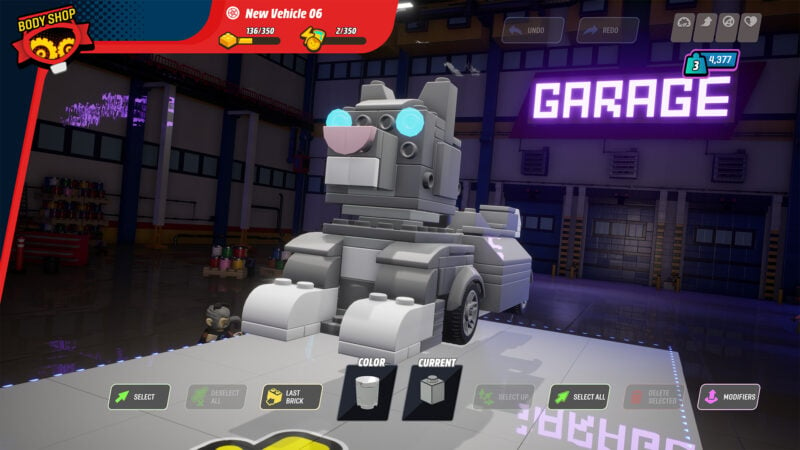
There’s naturally standard arcade and karting game tropes, such as power-ups and weapons — “we try to keep them as Lego based as we could” says Ranck — and drifting.
“As far as like the drifting is concerned that’s the lifeblood of the entire game,” says Kehlenbeck. “It’s something that we put upon the player to learn from the get go; we won’t let you out of the start zone unless you can drift!”
“Then we also have a quick turn feature, which is… you could call it your handbrake, but we call it quick term because literally it makes you turn quickly. Steve mentioned the putter mini game. It’s very handy for the putter because as you’re traveling around, you want to be able to square up that ball to the hole, so you can use that to do an instant 90 degree turn.”
“And we also have a jump mechanic. So your vehicle actually does jump, not just a little skip, a pretty sizable jump. So there’s, there’s your wacky LEGO element thrown in as well.”
We’ll be getting our hands on LEGO 2K Drive this week and we’ll let you know what we think soon. The title will launch on Friday May 19 on Nintendo Switch, PC, PlayStation 4/5, and Xbox One/Series.
See more articles on Lego.










